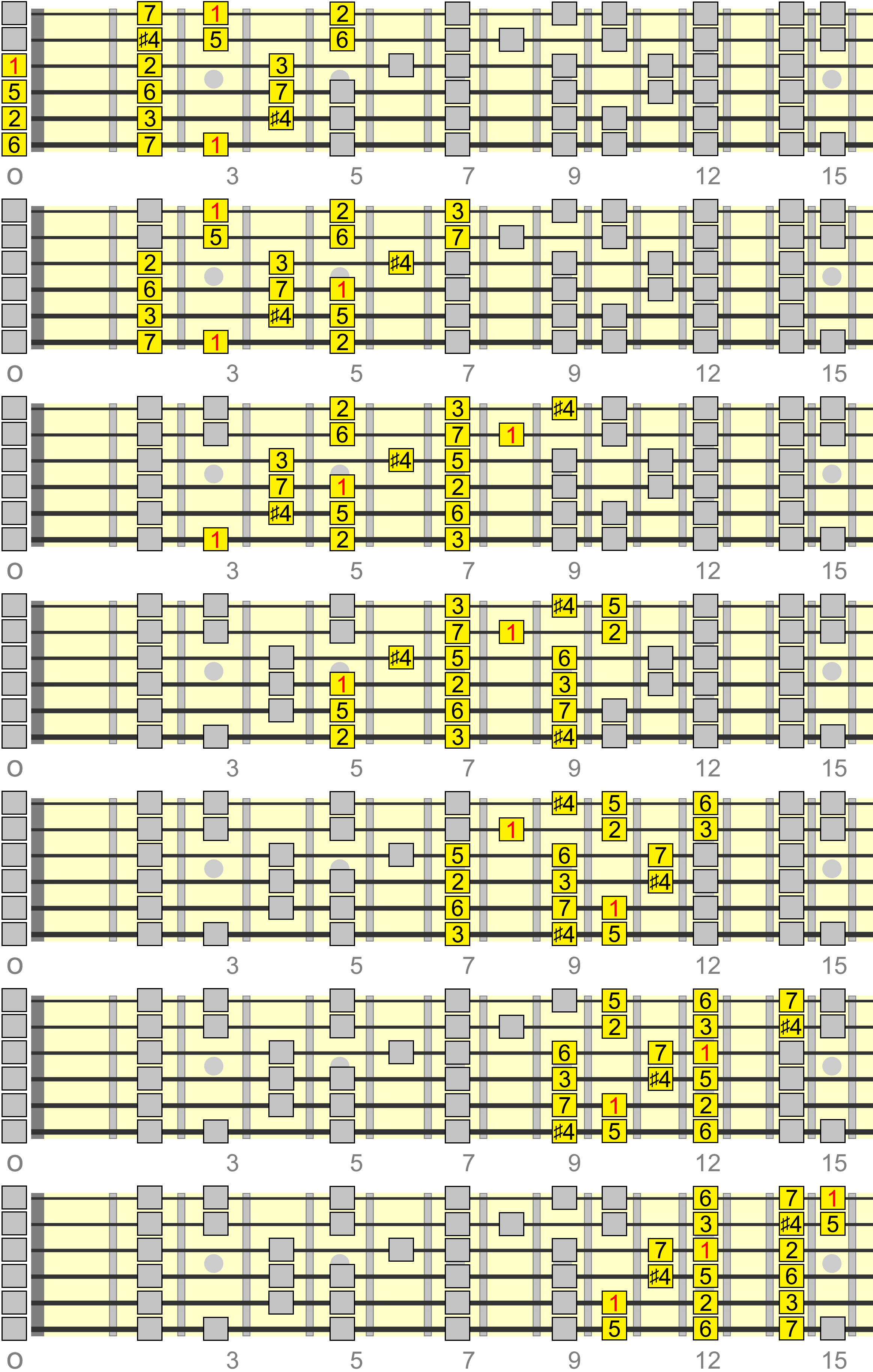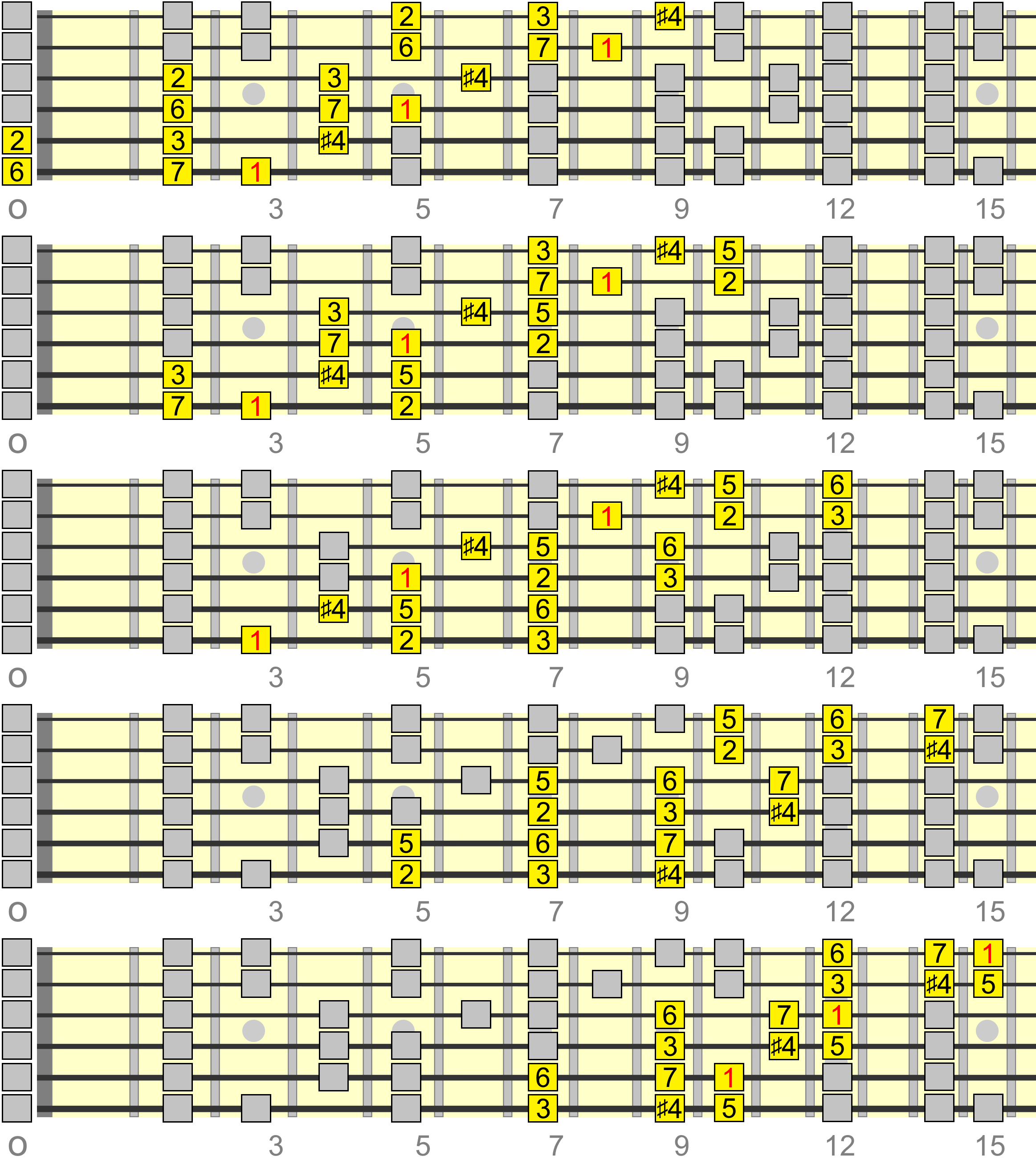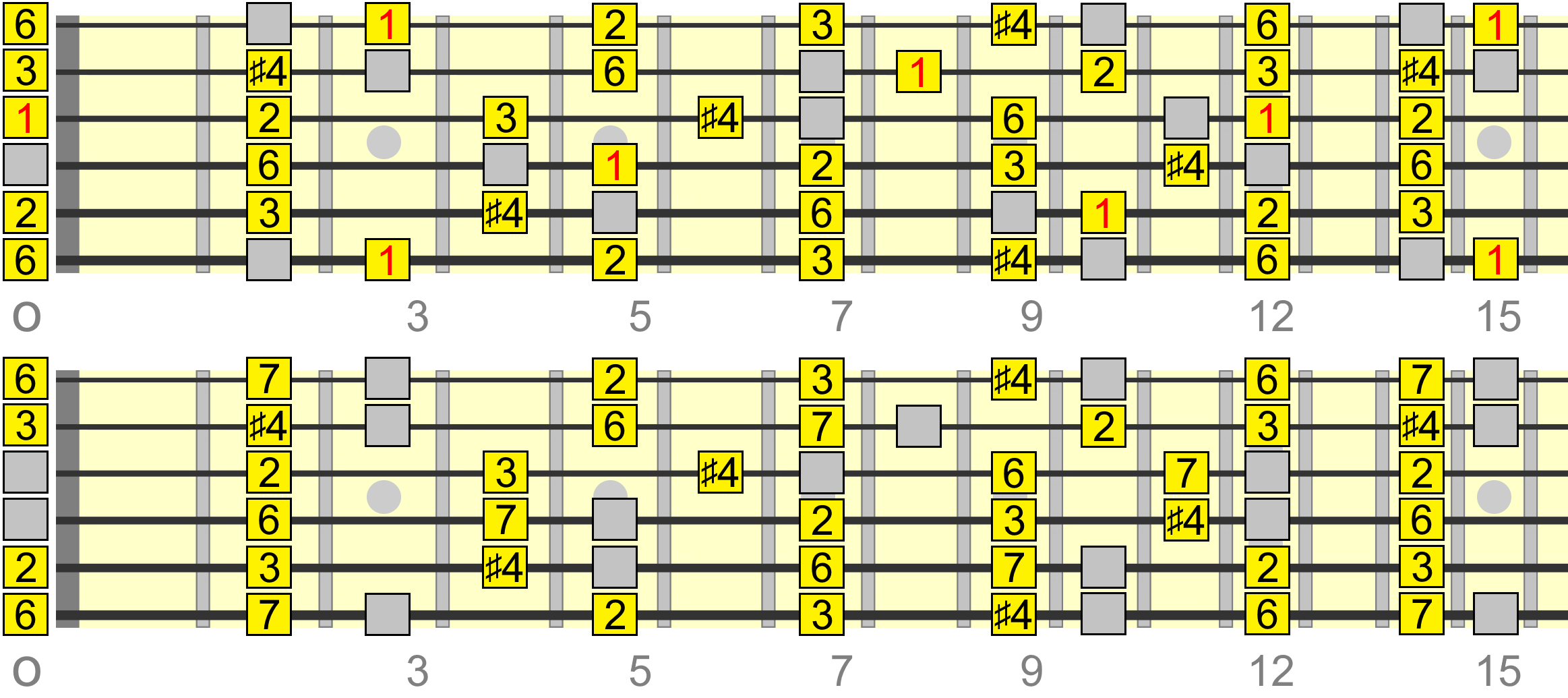Lydian Backing Tracks By Key
A Lydian
Parent Scale: E Major | Notes: A B C♯ D♯ E F♯ G♯ | Chords: A B C♯m D♯dim E F♯m G♯m
A Major Track
Progression Tracks
Patterns
Note that the "box" tab displays patterns formed around two familiar barre chord positions rooted on the 5th and 6th strings. These are a good starting point for finding your bearings.
Also, don't forget you can combine Lydian with regular major pentatonic and blues phrases/licks. But I've included a couple of pentatonic patterns more specific to Lydian's flavour to try out. The second pattern can be seen as major pentatonic positioned a whole step up from Lydian's root (e.g. play B major pentatonic over A to get A Lydian).


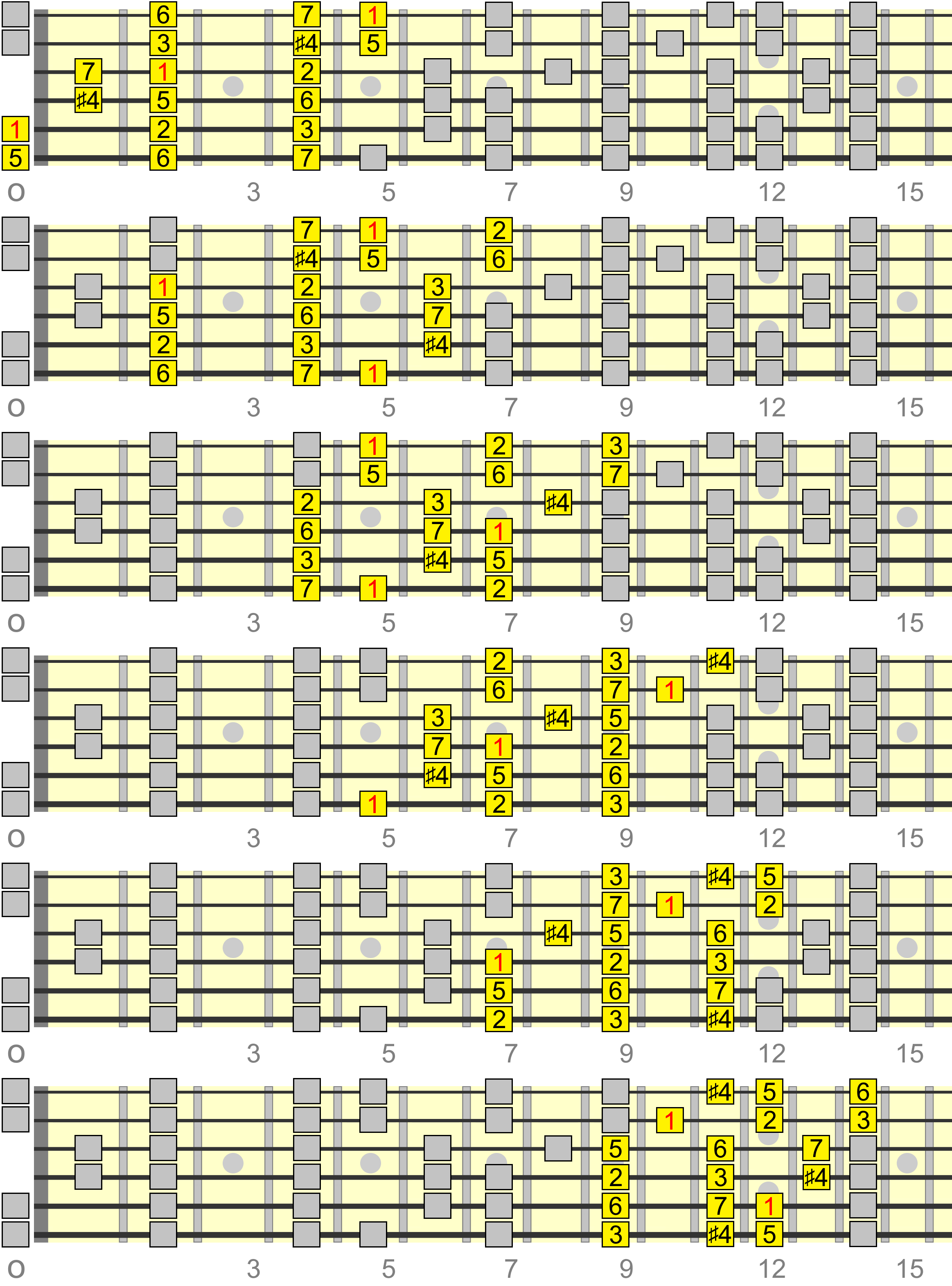
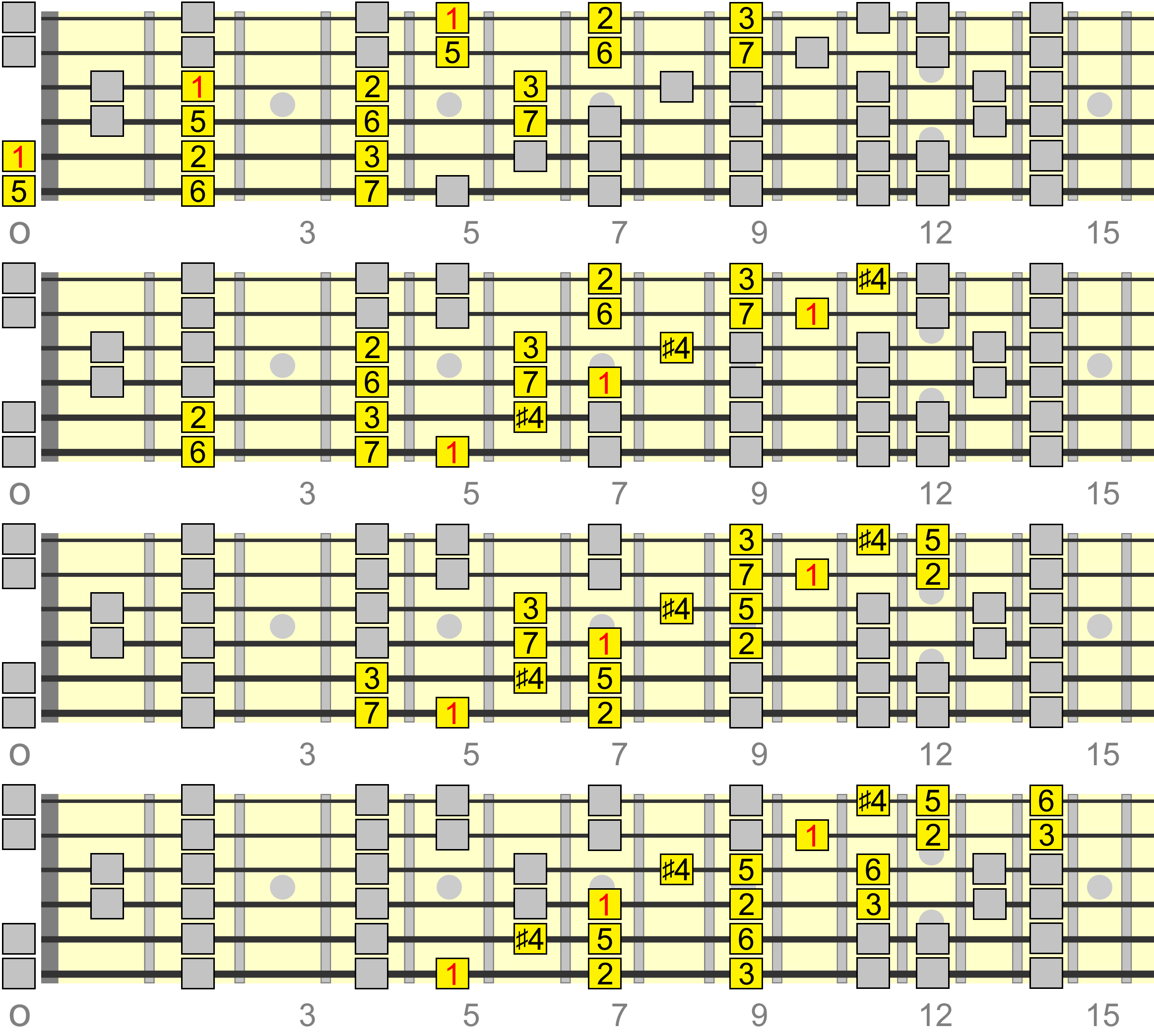
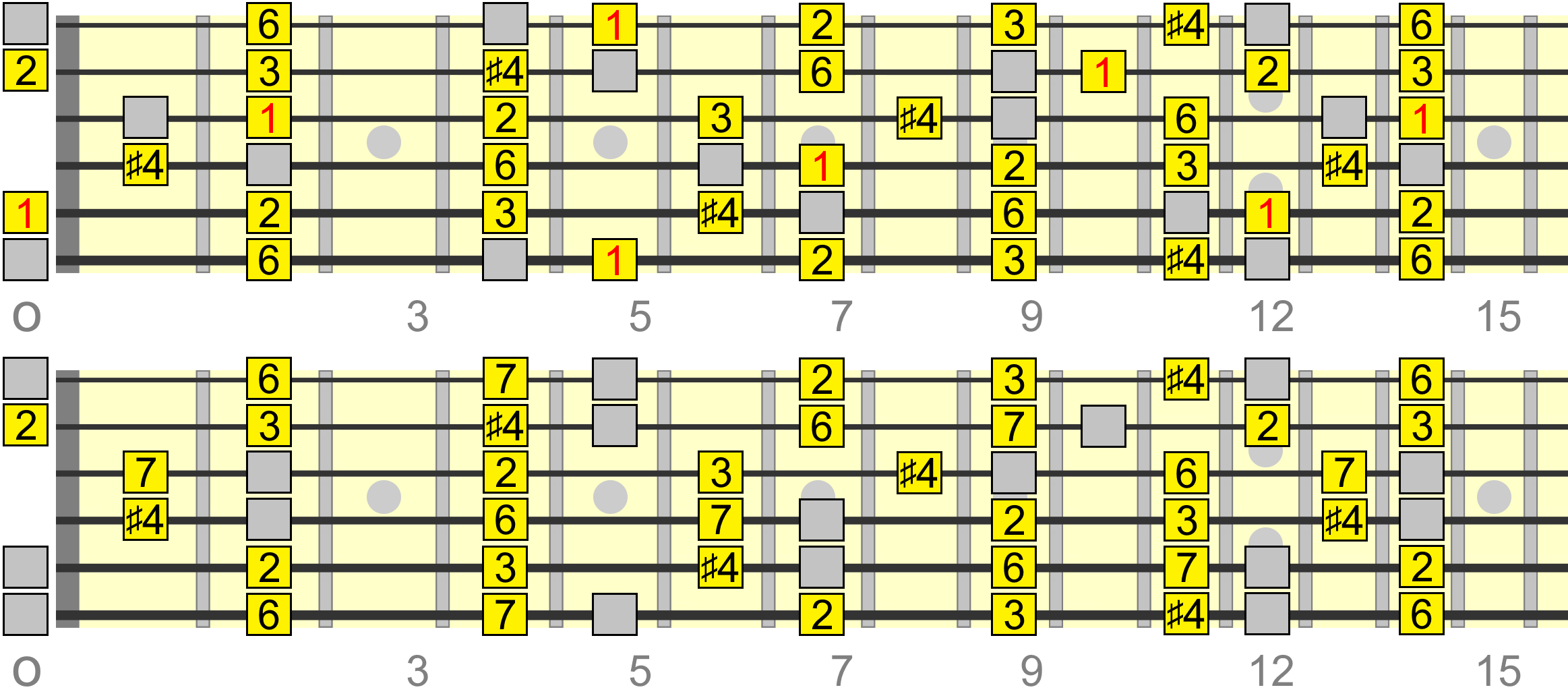
B Lydian
Parent Scale: F♯ Major | Notes: B C♯ D♯ E♯ F♯ G♯ A♯ | Chords: B C♯ D♯m E♯dim F♯ G♯m A♯m
B Major Track
Progression Tracks
Patterns


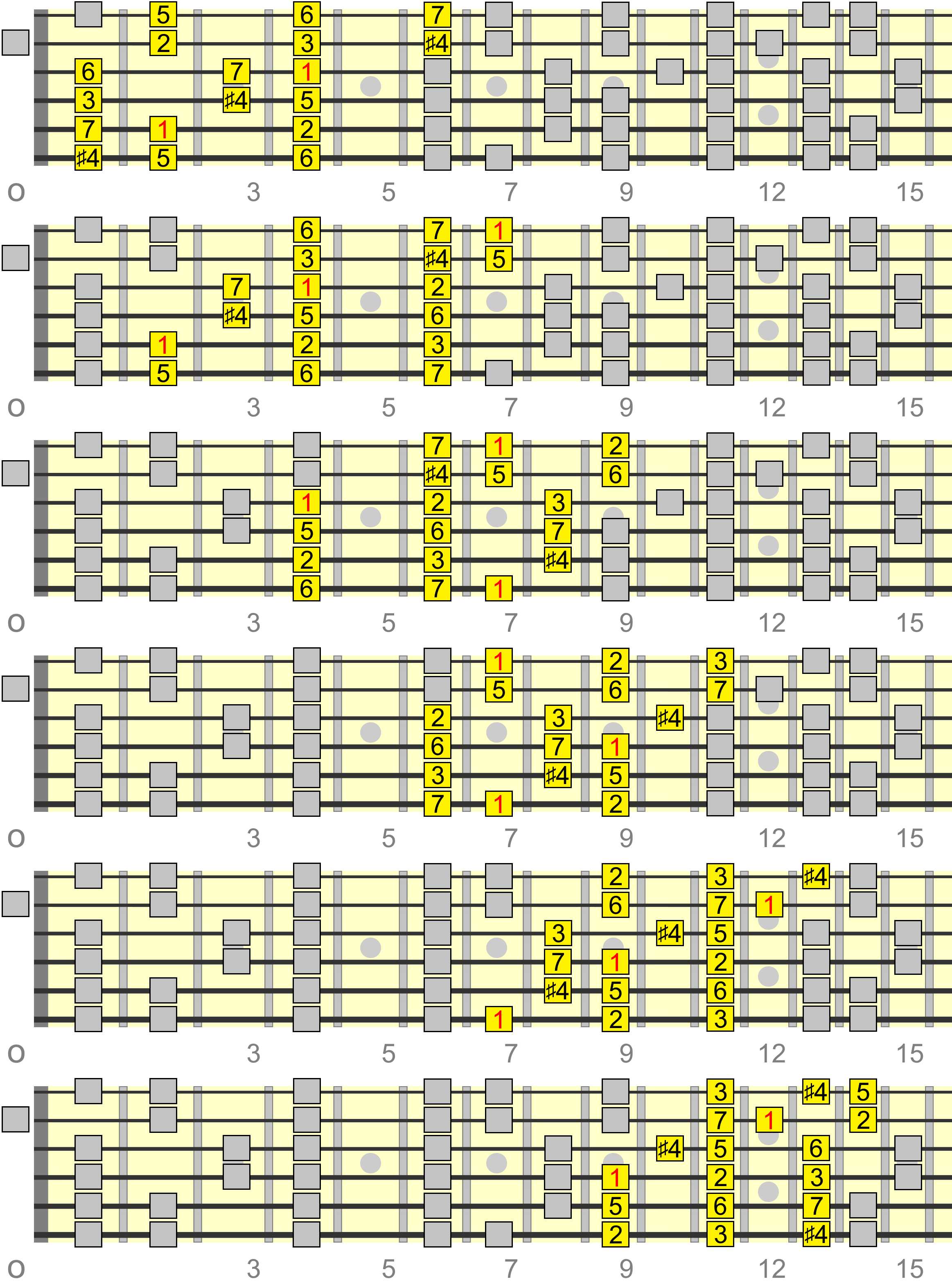
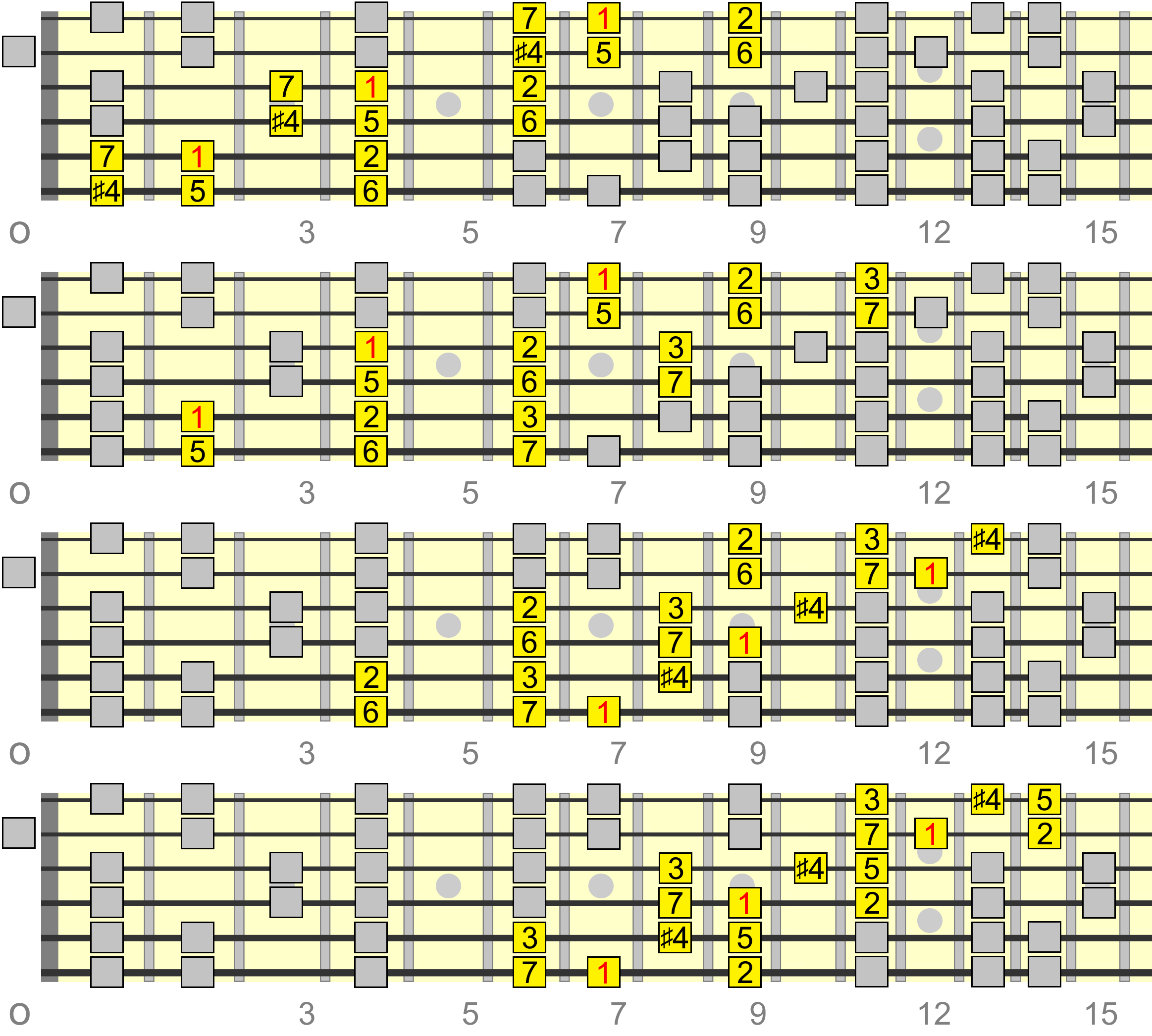
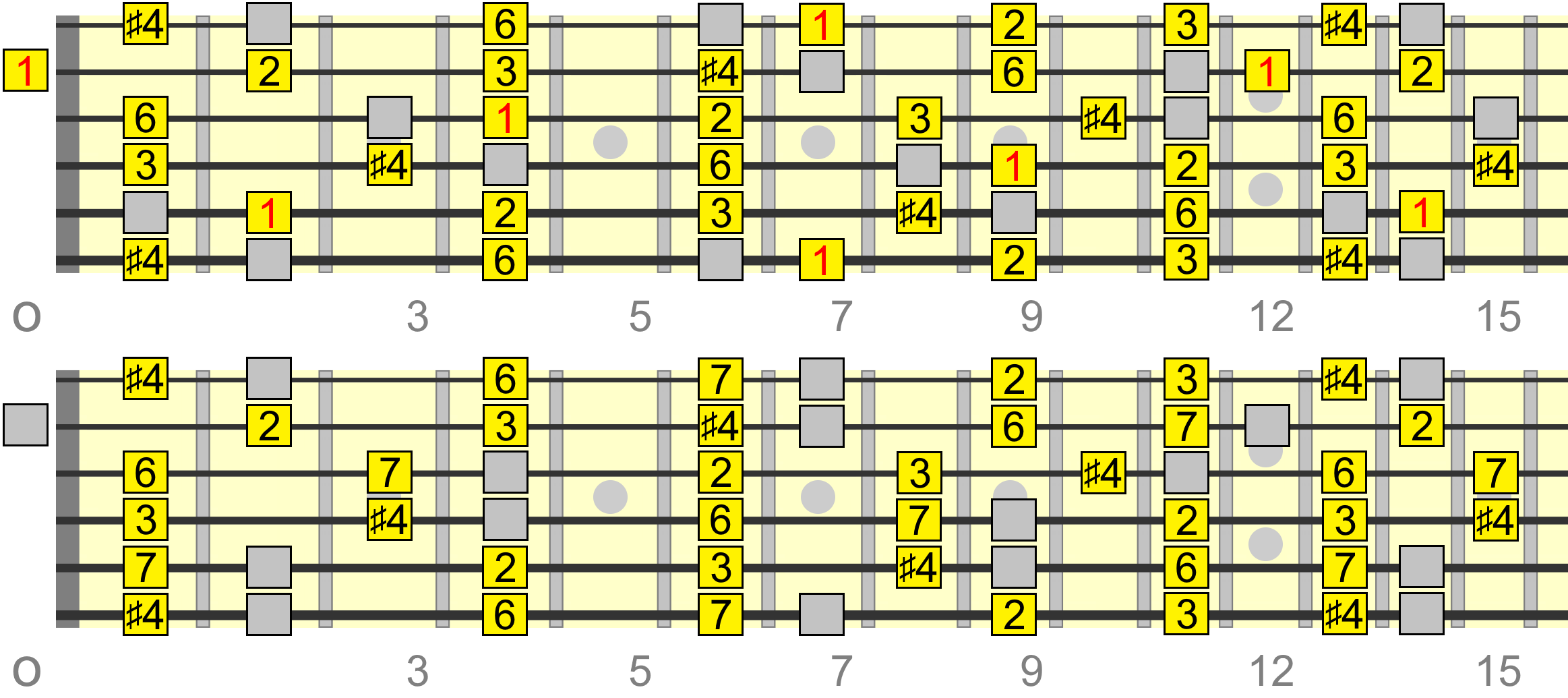
C Lydian
Parent Scale: G Major | Notes: C D E F♯ G A B | Chords: C D Em F♯dim G Am Bm
C Major Track
Progression Tracks
Patterns


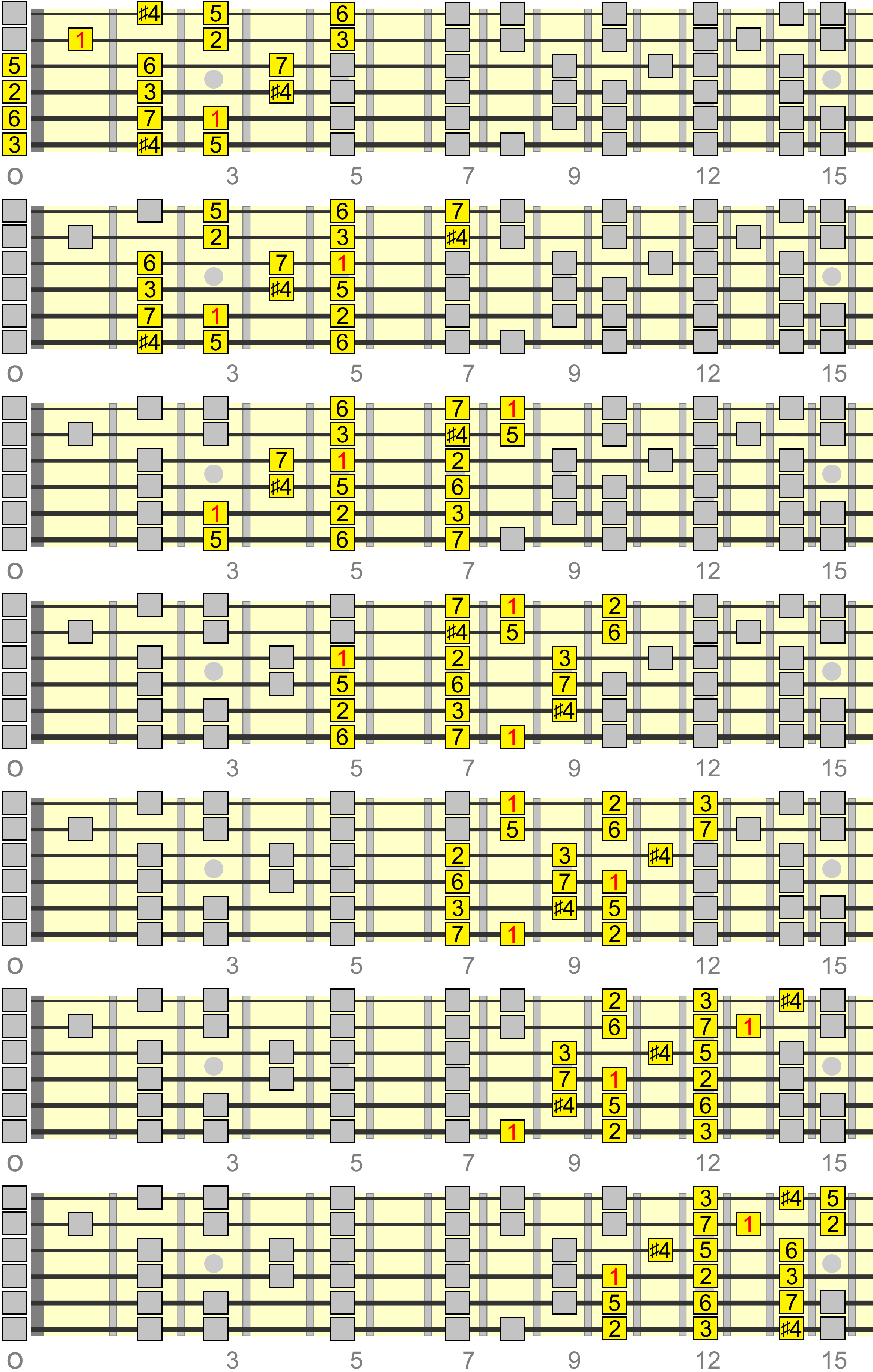
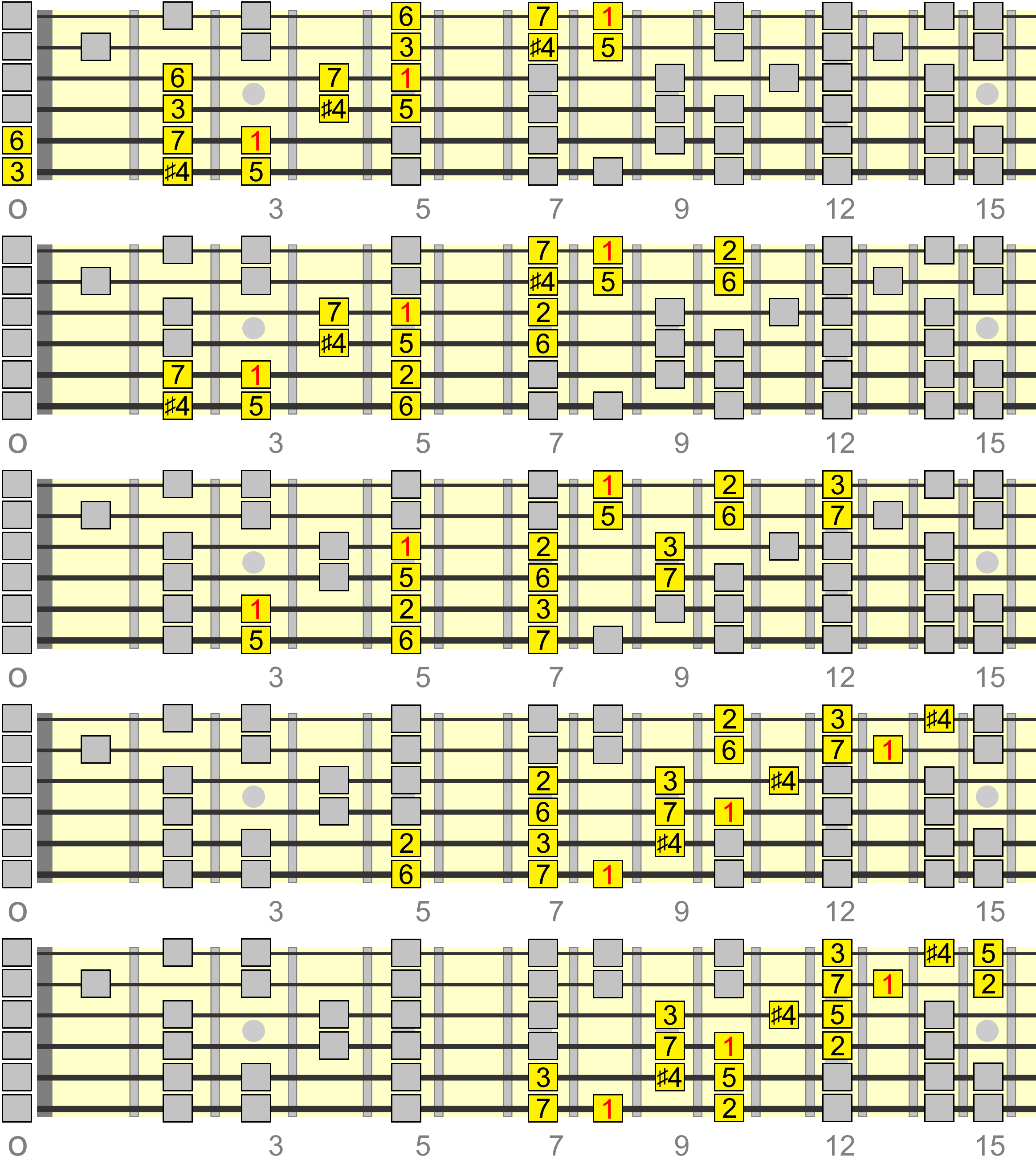
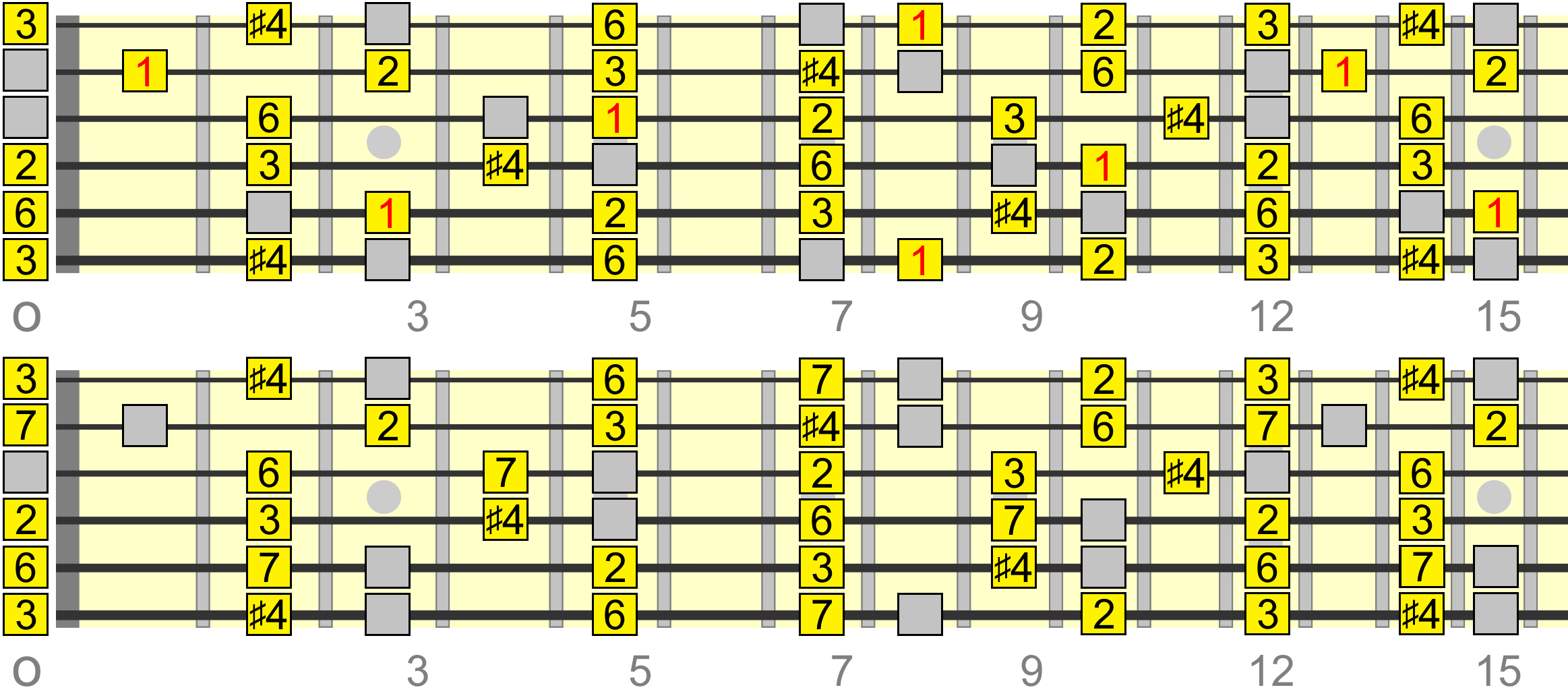
D Lydian
Parent Scale: A Major | Notes: D E F♯ G♯ A B C♯ | Chords: D E F♯m G♯dim A Bm C♯m
D Major Track
Progression Tracks
Patterns


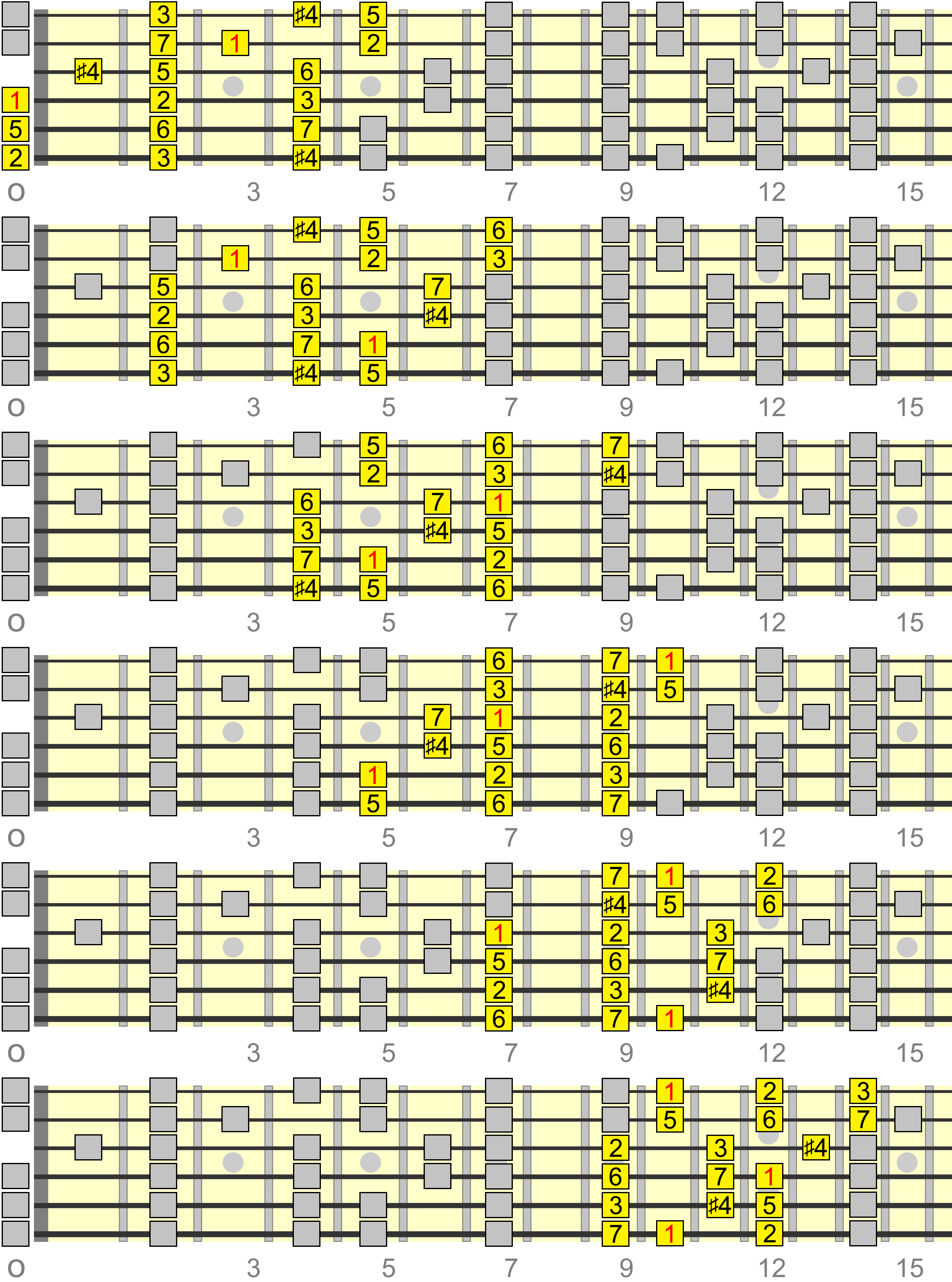
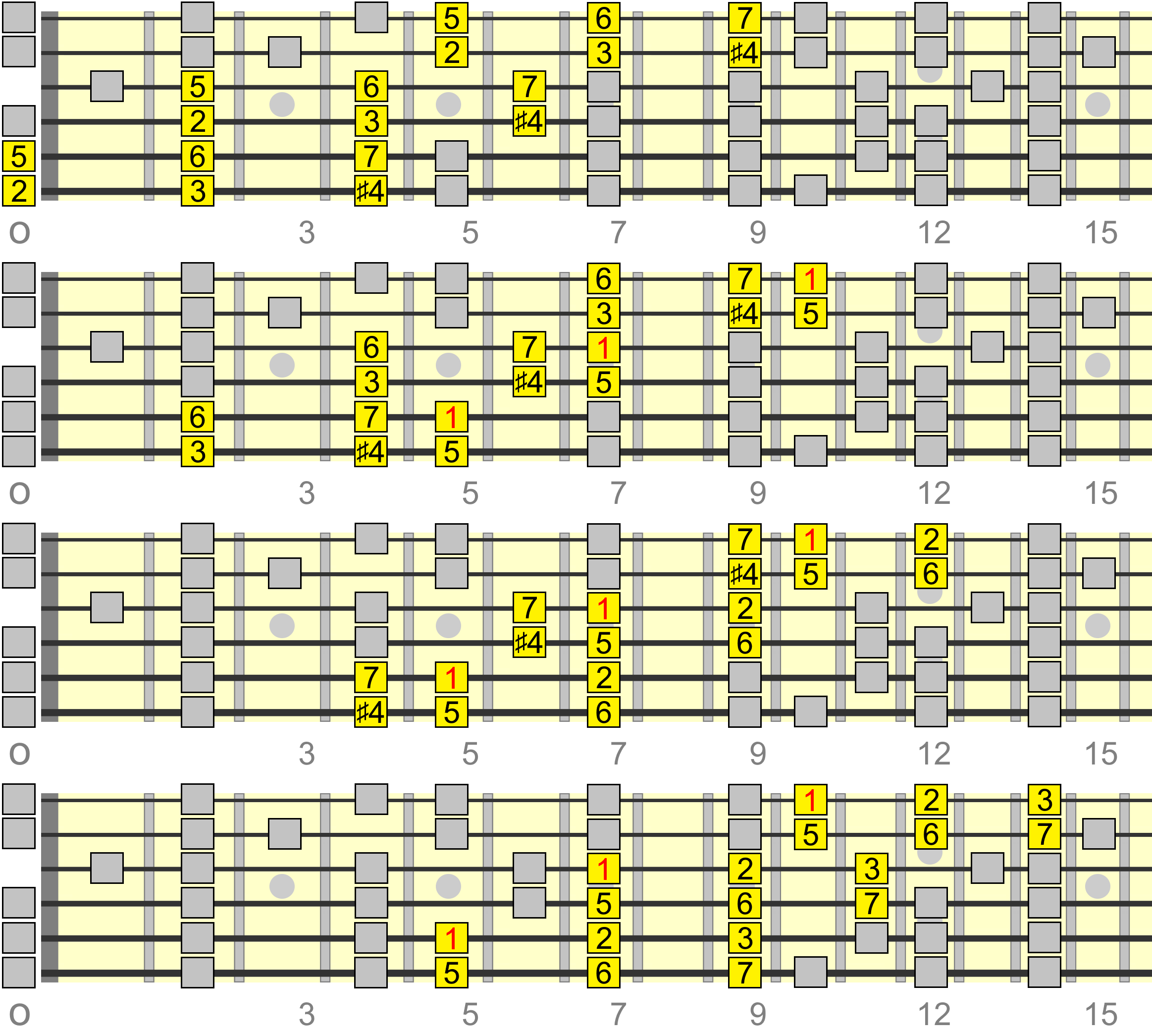
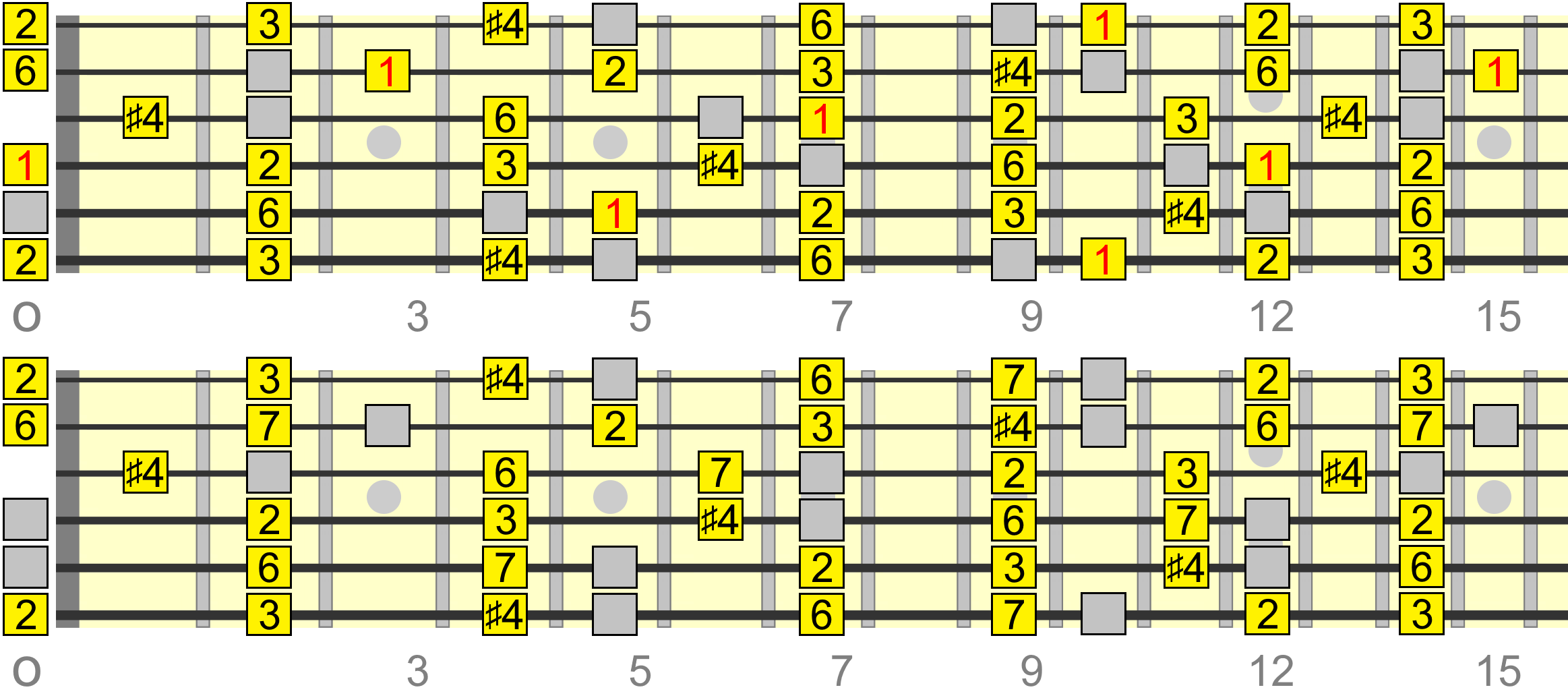
E Lydian
Parent Scale: B Major | Notes: E F♯ G♯ A♯ B C♯ D♯ | Chords: E F♯ G♯m A♯dim B C♯m D♯m
E Major Track
Progression Tracks
Patterns


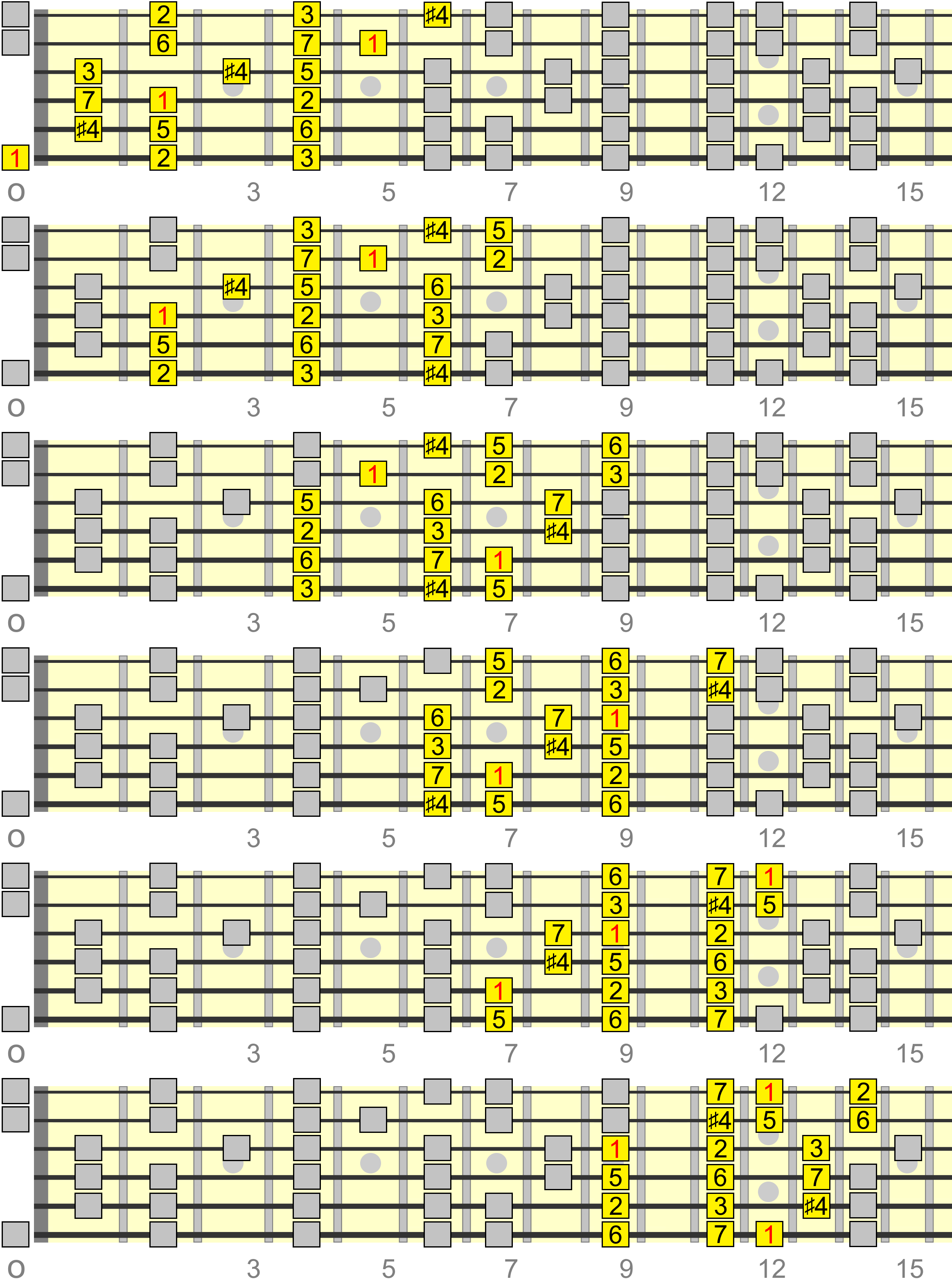
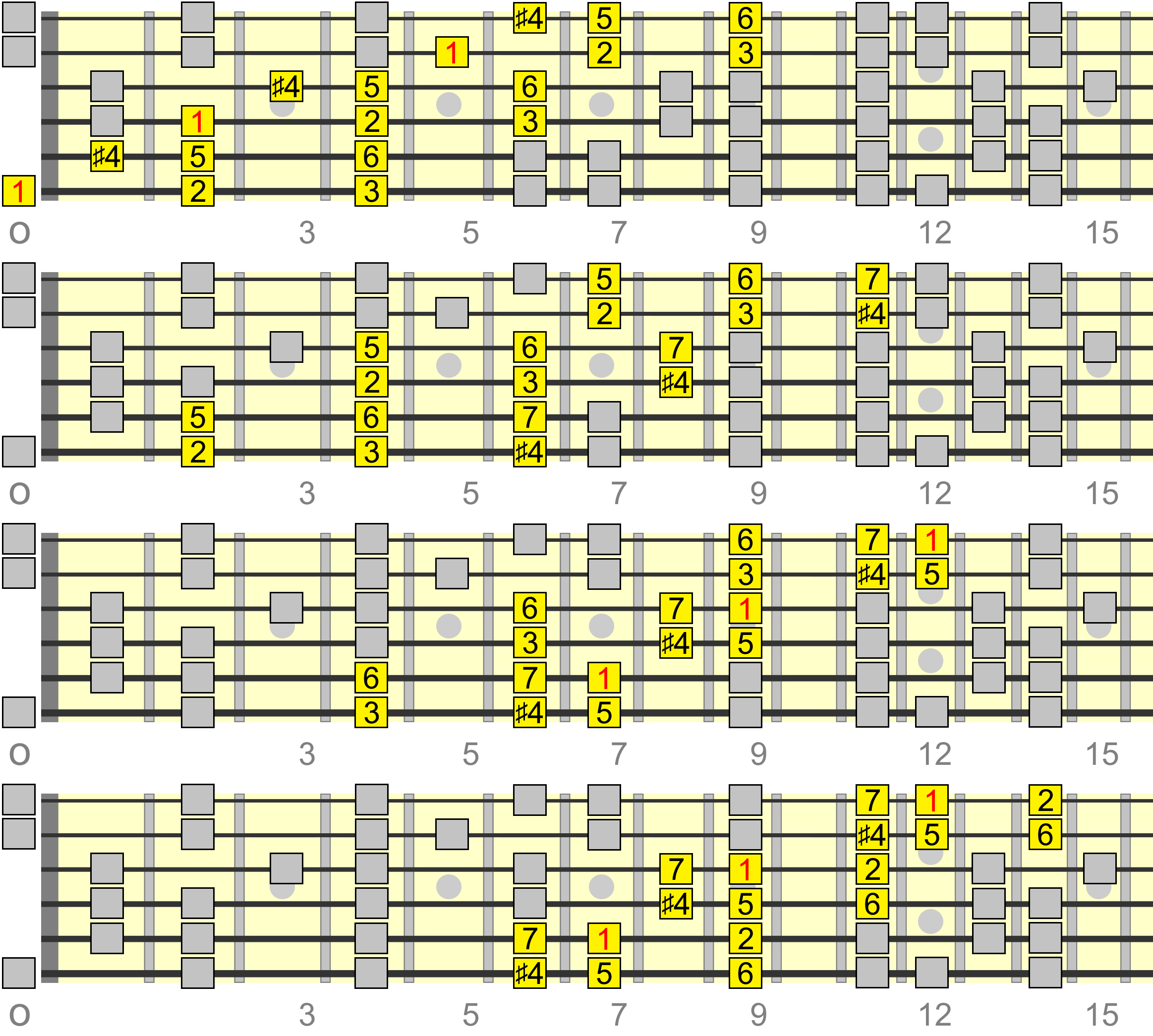
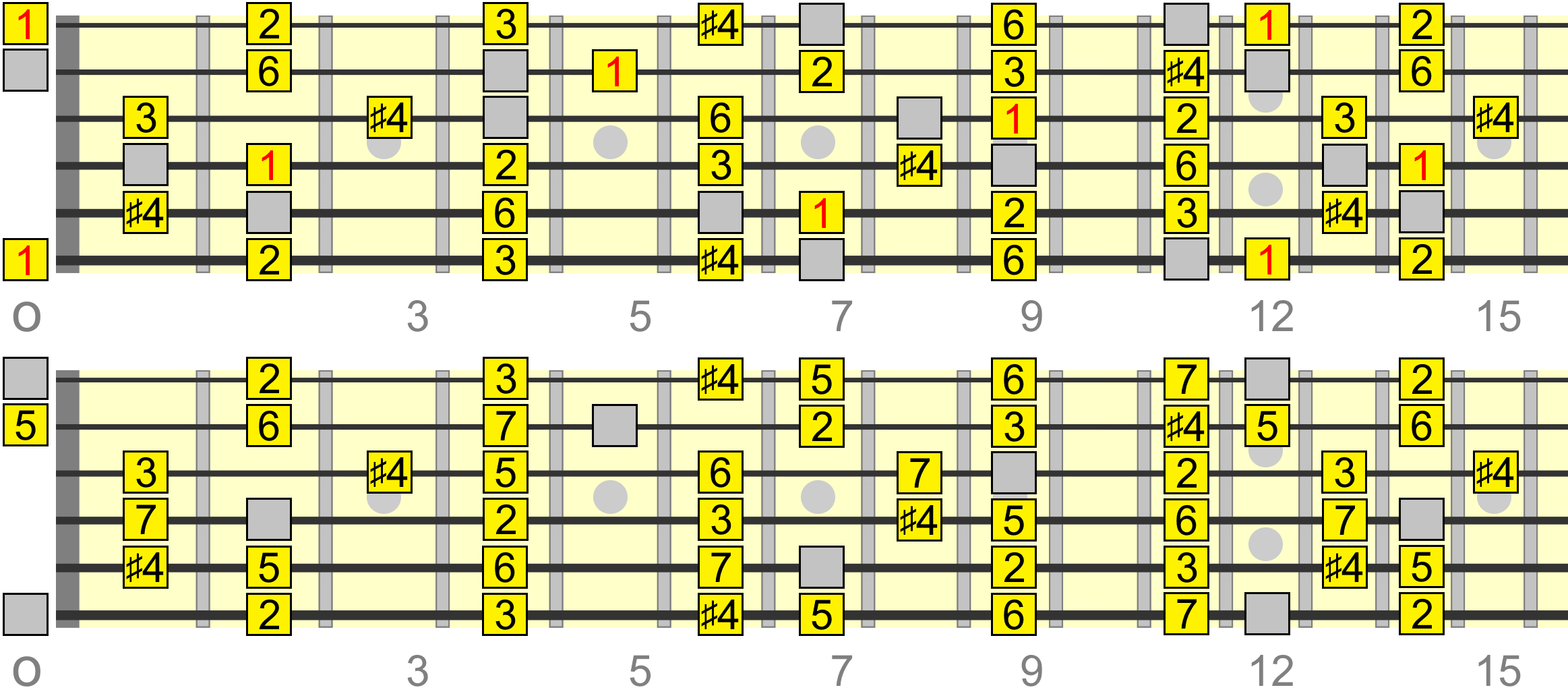
F Lydian
Parent Scale: C Major | Notes: F G A B C D E | Chords: F G Am Bdim C Dm Em
F Major Track
Progression Tracks
Patterns


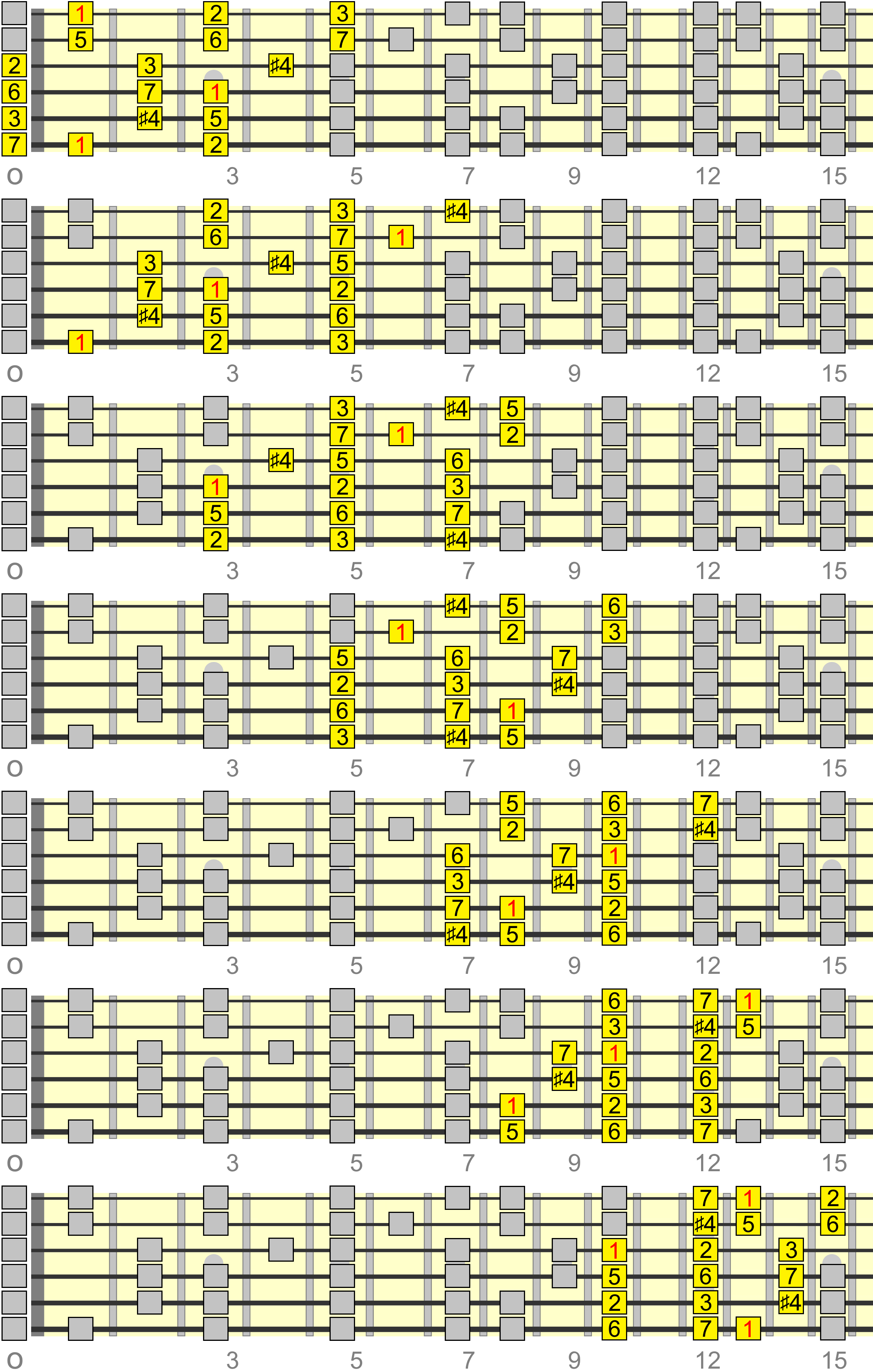
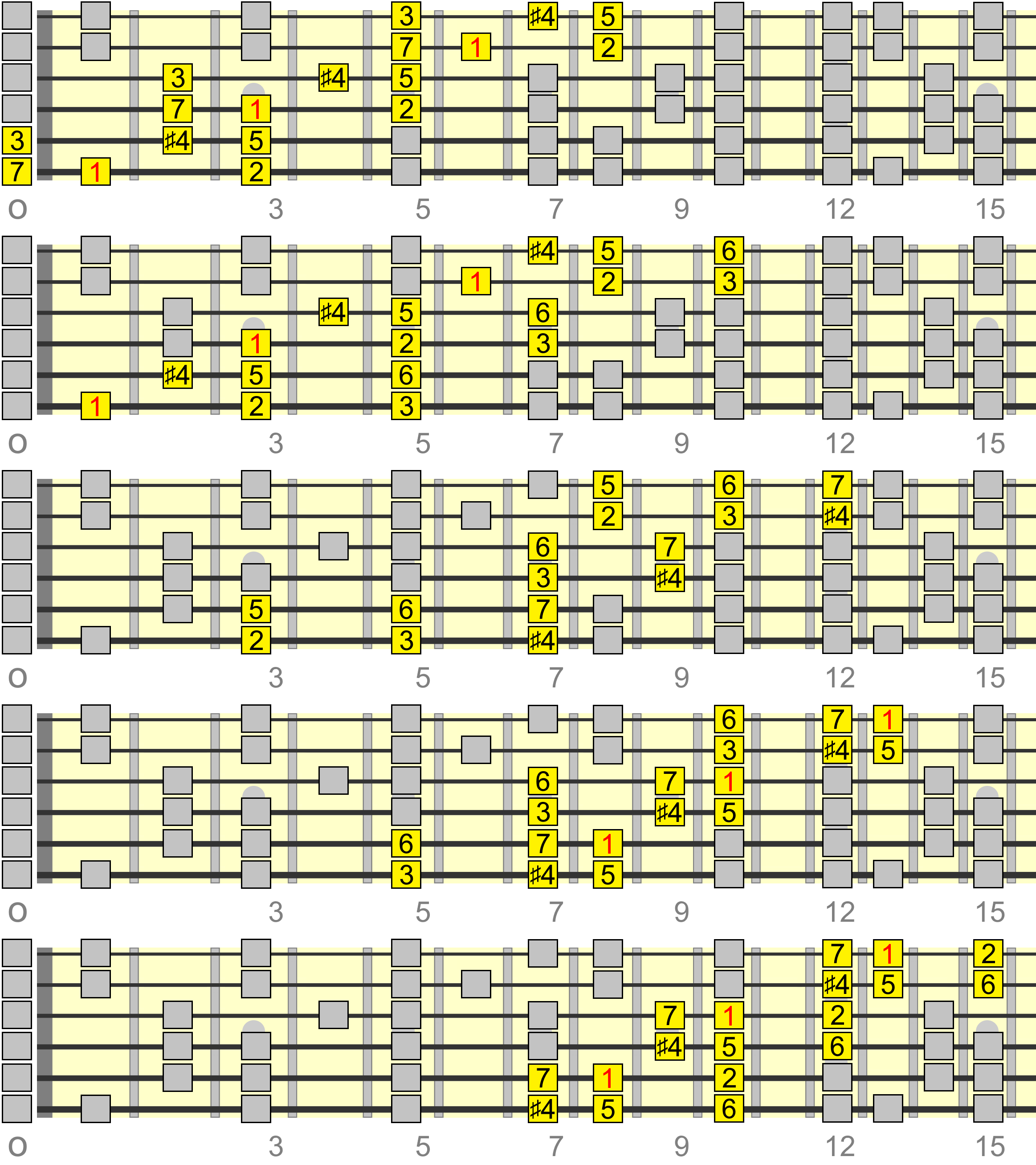
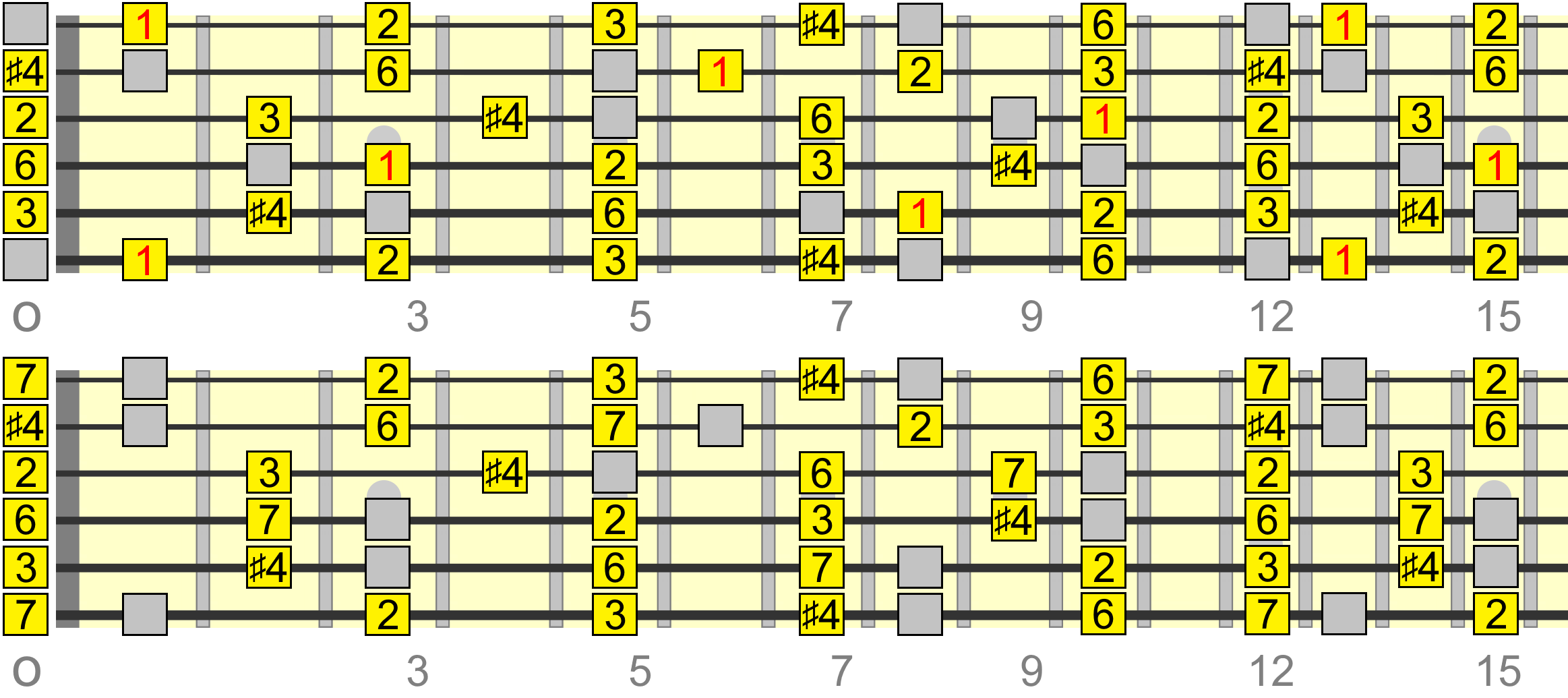
G Lydian
Parent Scale: D Major | Notes: G A B C♯ D E F♯ | Chords: G A Bm C♯dim D Em F♯m
G Major Track
Progression Tracks
Patterns


